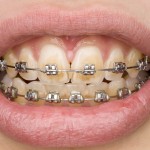
Mutans streptococci (MS) are closely associated with caries activity and the placement of fixed orthodontic appliances is usually followed by an increase in oral colonization of MS and an elevated risk of dental caries. While chlorhexidine digluconate (CHX) has been studies for decades for its ability to reduce gingivitis it has also been reported to inhibit MS. The aim of this review was to assess the effectiveness of chlorhexidine varnishes (CHX- V) on mutans streptococci in patients during orthodontic treatment with fixed appliances.
Methods
The Medline, Embase and Scopus databases were searched. Randomized controlled trials (RCT), controlled clinical trials (CCT) or clinical trials (CT) measuring the antimicrobial effect of CHX-V on MS levels in those undergoing fixed appliance orthodontic treatment were considered. Two reviewers independently screened studies, with 3 reviewers assessing quality using the Cochrane risk of bias tool.
Results
- 11 studies involving a total of 282 patients were considered.
- 3 were RCTs; 3 controlled trials; 5 non-controlled clinical trials.
- 6 studies investigated 1% CHX-V/1% thymol ; 3 36–40% CHX-Vs (29–31), one evaluated both varnishes (32), and one evaluated a custom CHX-V preparation.
- 7 of the studies demonstrated a reduction in MS 3–4 weeks following CHX-V application.
- 3 studies reported the effect of CHX-V in reducing the incidence of incipient carious lesions with mixed results.
- CHX-V applications varied in frequency and intensity.
Conclusions
The authors concluded:
A limited number of studies with low risk of bias were available to address the antimicrobial efficacy of CHX-V on MS in patients during orthodontic treatment with fixed appliances. Therefore, while the majority of studies found CHX-V to be an effective antimicrobial against MS at an interval of 3–4 weeks, the strength of the recommendation is weak. Longitudinal studies are needed to determine whether this antimicrobial effect will contribute to clinically significant caries reduction in patients undergoing orthodontic treatment with fixed appliances.
Comments
Only 3 of the identified studies for this review were RCTs. The studies sizes were generally small ranging from 12-80 patients, with only two studies having more than 33 patients. The studies were also heterogeneous showing variations in the CHX concentration, frequency and intensity of the applications. There were also variations in the plaque sampling procedures and study duration. Consequently, no meta-analysis was undertaken. The available evidence to address this question is therefore very limited.
It is also worth noting that MS levels are a surrogate endpoint and the main clinical aim is to reduce caries or white spot lesions that arise during orthodontic treatment and the recent Cochrane review by Benson et al (Dental Elf 27th Jan 2014) found moderate evidence that regular fluoride varnish applications during orthodontic treatment reduced white spot lesions. A more recent Cochrane review by Walsh et al (Dental Elf 16th Apr 2015) included 8 RCTs but found little evidence that CHX varnish or gels reduced caries, although no studies in patients undergoing orthodontic treatment were included.
Links
Tang X, Sensat ML, Stoltenberg JL. The antimicrobial effect of chlorhexidine varnish on mutans streptococci in patients with fixed orthodontic appliances: a systematic review of clinical efficacy. Int J Dent Hyg. 2015 Aug 10. doi: 10.1111/idh.12163. [Epub ahead of print] PubMed PMID: 26257398

Chlorhexidine varnish in patients with fixed orthodontic appliances http://t.co/8gc1RN9Iib
Little evidence for chlorhexidine varnish in patients with fixed orthodontic appliances http://t.co/8gc1RN9Iib
Weak evidence for an effect of chlorhexidine varnish in patients with fixed orthodontic appliances http://t.co/8gc1RN9Iib
Little evidence of benefit of chlorhexidine varnish in patients with fixed orthodontic appliances http://t.co/8gc1RN9Iib
Don’t miss – Chlorhexidine varnish in patients with fixed orthodontic appliances http://t.co/8gc1RN9Iib